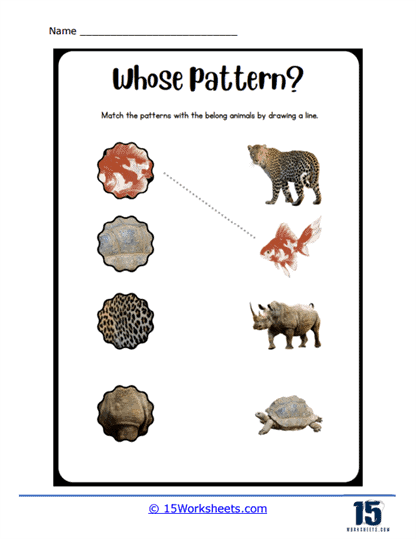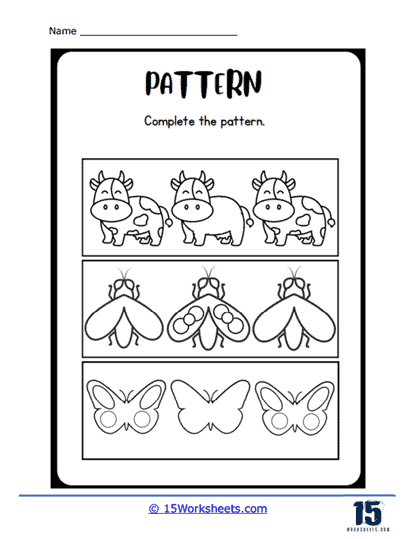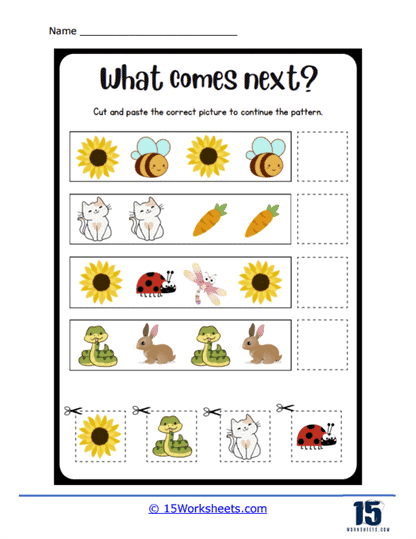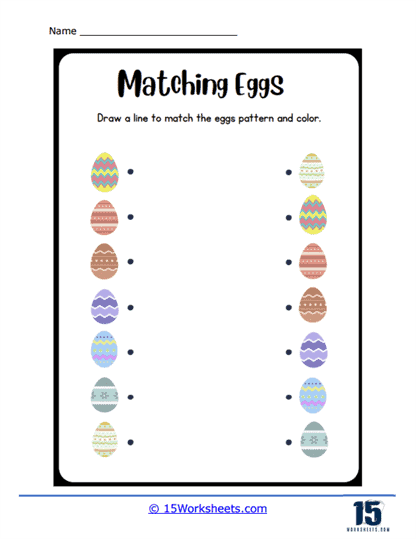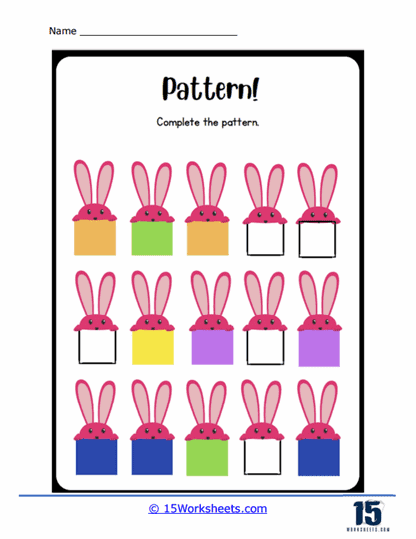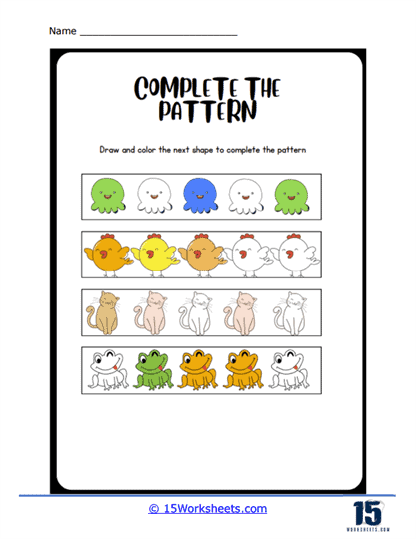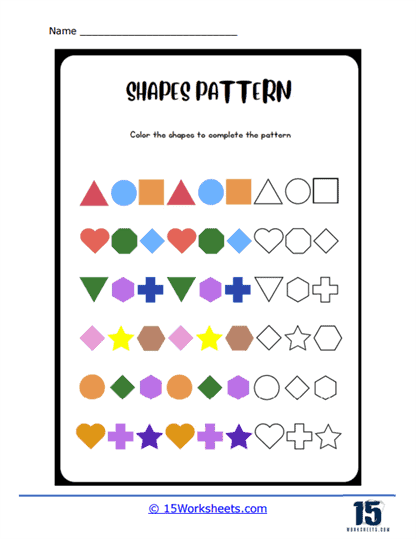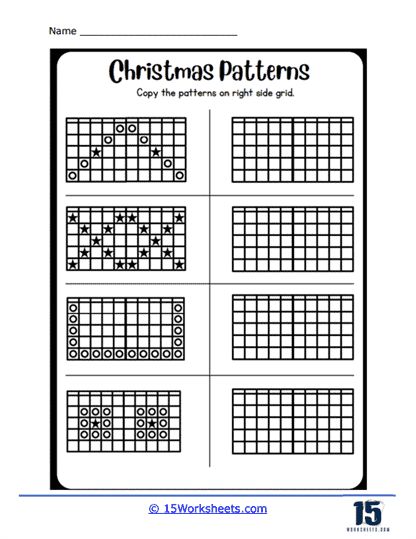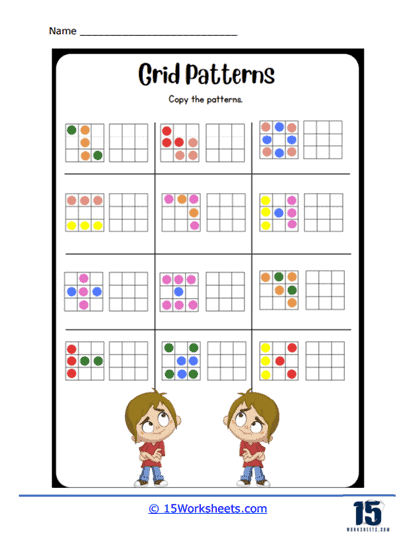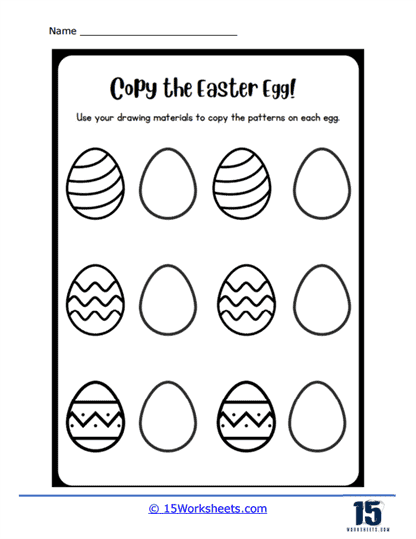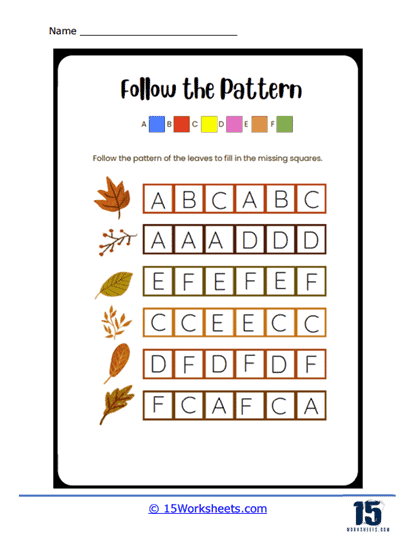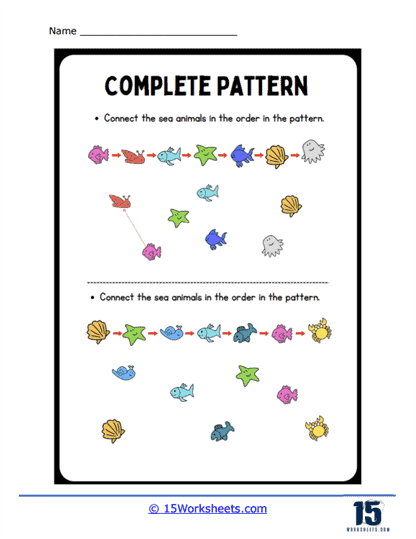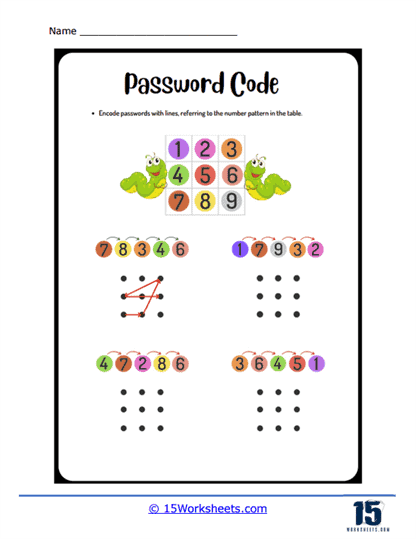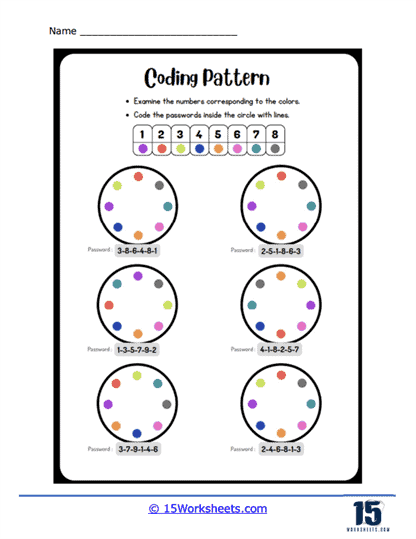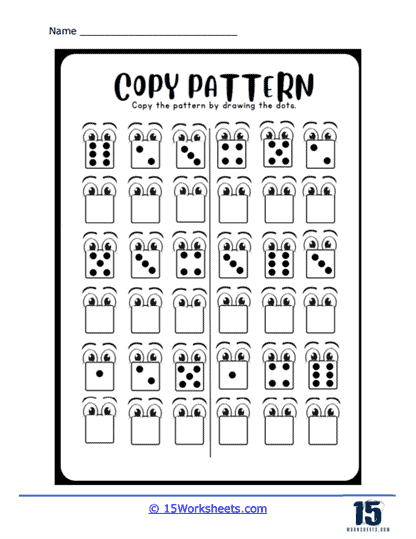Copying Patterns Worksheets
All About These Worksheets
Immerse young learners in the captivating world of patterns with this engaging series of Copying Patterns worksheets. This series is designed to develop critical thinking skills, enhance visual perception, and foster cognitive growth by introducing students to the concept of copying and extending patterns. Through a variety of interactive exercises, students will strengthen their ability to recognize, analyze, and replicate patterns in different forms.
By engaging in activities that involve shapes, colors, numbers, and objects, students will develop a foundation for logical reasoning, problem-solving, and mathematical thinking. This collection serves as a valuable tool for building pattern recognition skills, enhancing visual-spatial abilities, and fostering a deeper understanding of mathematical concepts. Through these worksheets, students will:
- Observe and replicate a given sequence of shapes, strengthening visual discrimination and shape recognition skills;
- Match the patterns to the corresponding animals or objects;
- Replicate patterns by drawing them or coloring them in, strengthening visual discrimination, shape recognition, and color identification;
- And do cut and paste exercises to continue patterns.
Through this dynamic series of Copying Patterns worksheets, young learners will develop essential cognitive and mathematical skills. By engaging in activities that involve shapes, colors, numbers, and objects, students will enhance their ability to recognize, analyze, and replicate patterns. These worksheets provide opportunities for hands-on exploration, critical thinking, and visual perception.
By participating in these exercises, students will develop a foundation for mathematical thinking, logical reasoning, and problem-solving skills. Ultimately, this collection serves as a stepping stone for a deeper understanding of mathematical concepts and lays the groundwork for future mathematical explorations.
What Are Copying Patterns Worksheets?
These worksheets are educational materials designed to help children develop their ability to recognize, extend, and create patterns. The worksheets feature a variety of patterns consisting of different shapes, colors, or objects arranged in a specific order.
They can come in many different forms, such as fill-in-the-blank exercises, matching games, and puzzles. Some worksheets might ask children to complete a given pattern by filling in the missing shape, while others might ask them to create their own pattern using a given set of objects or colors. Many copying patterns worksheets also include visuals and illustrations to make the learning process more engaging and enjoyable for young children.
They can be used in the classroom, at home, or during other educational activities to help children build their understanding of patterns and gain confidence in their ability to recognize and create different types of patterns.
Teaching students to copy patterns can be done using various methods. Here are some strategies you can use:
- Real Objects – Use real objects of different shapes, colors, or sizes, and ask students to copy the patterns by arranging the objects in the same order as the original pattern.
- Pattern Blocks – Provide students with pattern blocks and ask them to copy the patterns by placing the blocks in the same order as the original pattern.
- Visual Aids – Use pictures or illustrations that show examples of patterns, such as pictures of different shapes, colors, or objects arranged in a specific order. This helps students learn to recognize patterns more easily.
- Pattern Cards – Provide students with pattern cards that show different patterns, and ask them to copy the patterns using objects or pattern blocks.
- Worksheets – Use copying patterns worksheets to give students more opportunities to practice and apply the concept of copying patterns.
How Copying Patterns Can Improve Math Skills
Copying patterns can significantly contribute to the development of math skills, as pattern recognition and understanding form the basis of many mathematical concepts. By engaging in pattern copying activities, children develop sequential thinking, which is essential for understanding number patterns and solving algebraic equations. Furthermore, pattern recognition plays a vital role in problem-solving, helping children identify relationships and rules that govern patterns, which can be applied to solving more complex mathematical problems.
Copying patterns involving shapes and arrangements also enhances spatial reasoning skills, crucial for understanding geometry, measurements, and other mathematical concepts that require visualizing and manipulating shapes. Additionally, copying patterns exercises a child’s working memory, allowing them to retain and process information in math more effectively.
Logical reasoning is another skill developed through pattern recognition activities. It is the ability to make sense of relationships and rules, which is fundamental for understanding mathematical operations and solving word problems. By copying patterns accurately, children also develop a keen attention to detail, which is essential for noticing small differences, identifying errors, and ensuring accuracy in mathematical calculations.
In conclusion, copying patterns not only helps children develop a range of essential mathematical skills, such as sequential thinking, problem-solving, spatial reasoning, and logical reasoning but also enhances memory and attention to detail. These skills lay a strong foundation for more advanced mathematical concepts, such as functions, algebra, and calculus, setting children up for success in math in the long run.

